A Lion Knows a Lion's Roar
 Sangha Stewardship workshops in 2024: Once we become established as practitioners in our sanghas and demonstrate that we have some skills and abilities to share, it's not uncommon to be asked to fill various leadership roles: board officer, tenzo, committee member, ino, or other service positions. Sometimes we may feel that these activities contribute to the development of our own practice, and sometimes we might find them distracting commitments of a large amount of time. We might feel proud to be asked to serve, but resentful of the extra workload we've agreed to carry. As part of its work practice in 2024, Sanshin will be offering two short workshops on bodhisattva leadership as experienced through the positions of sangha stewards, both practice leaders and administrative leaders. On April 5th and 6th, we'll explore the roles of tenzo (head cook) and ino. On October 5th and 6th, we'll explore the role of director, specifically in a sangha board of directors context. Workshops include both higher-level doctrinal context and practical applications. These sessions are also particularly aimed at small sanghas in our region which may be ready to add more structure to their communities, to take on more traditional practices, or to move from being informal gatherings to legally recognized organizations. Stay tuned for more information and registration details for the April workshop in the coming weeks. 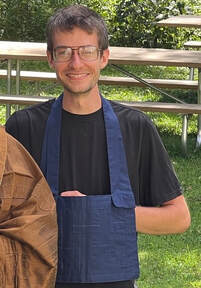 Operations manager: After a year working as Sanshin's event coordinator, Bloomington practitioner Sawyer Jisho Hitchcock has been hired as Sanshin's operations manager. He's taken on a few more responsibilities in addition to previous duties, such as compiling this and future newsletters, assisting our work leader in coordinating work practice at the temple, facilitating organizational discernment towards continuing to operationalize board-adopted policies and aspiration statements, and generally working with the board of directors, Hoko, Okumura Roshi, the Dōgen Institute, and the sangha at large as we aim to carry out our everyday practice and mission together "without hindrance." Sawyer grew up primarily in central Indiana, and found his way to Sanshinji in 2016, while living at his family’s cabin house a half-hour away in Yellowwood State Forest. He lived at Sanshin as a resident practitioner from April through December of 2022 and found it deeply compelling to be a part of establishing residential practice here. As a part-time farmhand, he has found it meaningful to begin to develop relationships between Sanshin and nearby small, sustainably-minded farms, sourcing produce from the local community for the sesshin and retreats he helps to coordinate. He received lay precepts from Hoko Karnegis in July of 2023, and is glad for the opportunity to continue to practice, serve, and work with the sangha in this role. Board of directorsFrom the Treasurer: Gene Kishin Elias The year 2023 is behind us, and we are looking forward to 2024. The list of what we want to do this year and beyond is long, and the board of directors is working very hard to prioritize what we want versus what we can feasibly do. By the January board meeting, we will have finalized our budget for 2024. But that is the future. I thought it would be helpful to understand how your gifts were used in 2023. The chart above indicates how those monies were spent. As shown by the chart, the largest expenses have been and will continue to be teaching, research and content generation – that is by far our primary mission. Our overhead includes a lot of expenses that we simply don’t have any control over, like keeping the lights on, heating and cooling, and internet costs, among other items. The board works very hard to ensure our monies go to the most important priorities. Your gifts of financial support enable Sanshin to make Soto Zen practice available in its own particular style, which is based on the teachings of the Buddha, Dōgen Zenji, and Sawaki, Uchiyama and Okumura Roshis. Around the US and across the worldwide Sanshin Network, thanks to friends like you we continue to carry out our mission of enabling the investigation of interconnectedness as it manifests in community by engaging in six points of Soto Zen practice. If you have questions about Sanshin's finances, please email me. Thank you for your support, and may your life be filled with kindness, joy and magnanimity. Practice recap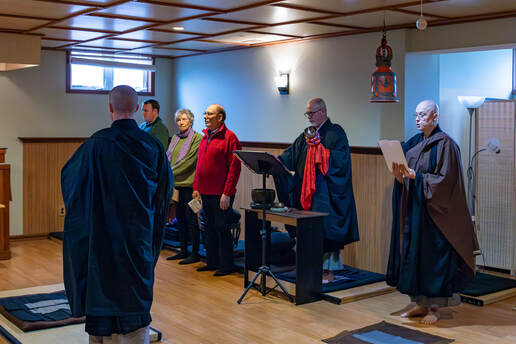 Bell dedication: Following Okumura Roshi's Sunday dharma talk on January 7th, we held a dedication ceremony for an old Buddhist temple bell donated to Sanshin by Bloomington community members John Lawrence and Elaine and Phil Emmi. The bell will be used to mark the beginning and end of every zazen period we do henceforth. The ceremony was a simplified version of what would traditionally be done for the dedication of a newly cast bonsho in a bell tower, including ceremonial strikes of the bell by one of the donors, our senior teacher Hoko, and board president Michael Komyo Melfi on behalf of the sangha. The sangha also chanted the Heart Sutra, which was followed by an extended eko for the occasion and remarks from the donor.
January work day: During this month's work day, we took on a few indoor projects amid temperatures near zero degrees Fahrenheit outside. Practitioners reorganized and added recently donated books to our donated dharma book library, shredded old administrative files in a continuing effort to clear office space, affixed one of two planned wall fans in the zendo, started the process of removing the paint from our recently donated zendo bell to increase its tonal clarity, and continued work on installing a sliding barn door to the kitchen just outside of the zendo. Coming up Simplified February practice schedule: During February and August at Sanshin, the regular practice schedule becomes quieter, less busy, and more focused on zazen. This seasonal practice rhythm is related to Uchiyama Roshi's sesshin schedule at Antaiji, where a sesshin was held every month except February and August, marked as the coldest and hottest months each year. Although we have centralized heating and air conditioning in the zendo at Sanshinji, we can acknowledge the facts of winter and summer in deeply settling into these two months of quieter, simplified practice activities. See our Schedules & Calendars page for full information on the changes. Ryaku fusatsu: There will be no ryaku fusatsu ceremony in February, due to the simplified practice schedule. Our next ceremony of renewing our aspiration to practice with the precepts happens March 18th at 7 pm. Both in-person and virtual participation is possible, and everyone is welcome regardless of whether or not you've formally taken precepts. 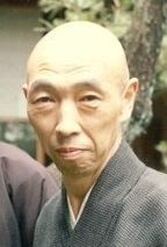 Uchiyama Roshi memorial sesshin (Mar 7 - 10): We dedicate our March sesshin to the memory of Kosho Uchiyama Roshi, the teacher of our founder, Shohaku Okumura. He died on March 13, 1998. We will hold a brief memorial service following the usual Sunday morning zazen and dharma talk, given by Okumura Roshi himself. LEARN MORE AND REGISTER HERE Visit our Schedules and Calendars page for information on all upcoming practice activities. Sanshin Network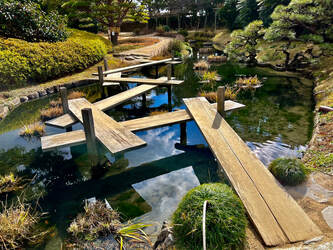 Sangha-travels with Issan: Members of the New York Zen Community for Dogen Study, founded and led by Issan Koyama, are preparing to visit important Soto Zen sites for themselves. Issan says, "February is approaching which means we are moving toward the launch of our pilot Dōgen Pilgrimage Tour of Japan, February 1 through February 22nd. It is with excitement that we look forward to visiting sites important to Buddhism while gaining a visceral experience of Dōgen’s life and teaching. A few sangha members will be joining Paul and me on a three weeks trip through Japan. The route is Tokyo - Nara - Asuka Village - Koya-san - Eihei-ji (overnight stay program) - Kyoto - then to Hakata (2 days in Myoko-ji, visiting other sites in Kumamoto, Nagasaki and Fukuoka). On the way back we are planning to make a detour to either Kanazawa or Morioka (iwate-prefecture). This portion is to be confirmed soon. At each site, I will be explaining the history and related texts by Dogen and others, etc. This is the first time I "officially" travel with sangha members and we decided to call it the Dogen Pilgrimage Japan Tour. I hope to continue to do this each year. If you would like to follow our footsteps virtually, we will be posting about our whereabouts, what we are visiting, studying, practicing, etc on both Facebook and Instagram, so others can feel they are joining us virtually. If interested, please send friend requests to either/both New York Zen Community for Dogen Study and/or Hajime Issan Koyama on Facebook, or "Follow" Issan Koyama on Instagram." See also the new website with an online practice schedule for the New York Zen Community for Dogen Study. Coming up with Shodo: Shodo will be offering two online dharma talks from Minnesota in the coming weeks, one for Hokyoji on January 21st, and one on 'EcoDharma' for North Shore Zen on February 1st. On three Wednesday evenings beginning February 7th, she will be leading a three-part online study workshop on Fukanzazengi. She will also be giving a talk and leading a one-day retreat with Bluestone Zen Practice Community in Duluth, MN on February 9th and 10th. Find links and more information for all of these offerings on the 2024 Mountains and Waters Alliance practice calendar. 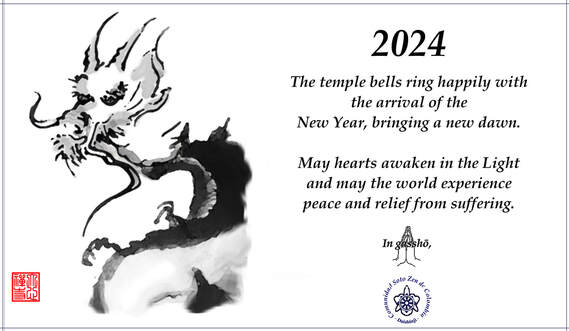 Densho reports from Colombia: "We are at the end of a great year for our temple. Many good things happened and next year we have many plans for our sangha. We have started the adequations of the new land. For the time being, we are not going to start a big construction, so we are not going to have yet a zendo to practice. Instead, we are accommodating the construction that already exists, to begin to sit. We have space to house about 25 people for a simple sesshin. In the land there is a natural source of water for consumption, and we have installed a two-chamber anaerobic septic system, with a grease trap and filtration system for water purification. The water used in the kitchen, the restrooms, and the baths, will return 100% pure back to nature. This is part of our commitment to protect water. We hope to start doing sesshin in the new place, so we do not have to rent a place. At the end of February, I will travel to Caracas, Venezuela, to officiate a Jukai ceremony for 8 members of Dokan sangha, which is guided by Jakusho Pignatiello. Because economic conditions are very bad at present in Venezuela, we are going to have something very simple. Maybe a zazenkai with zazen and Teisho, and next day, the Jukai ceremony." Are we reaching you?Do we have the best and most current contact information for you? If you've changed your e-mail address or moved to a new place of residence, or if we've never had complete information about how to reach you, it's time to update your record. Please take a moment to go here to send us the contact information you'd like us to use. We'll check it against your current record and update as needed. Don't miss any of the upcoming communications from Sanshin -- update your info today!
0 Comments
|
Sangha NewsOur newsletter is posted once a month. Sign up for our mailing list to get notifications of new issues. Archives
July 2024
|

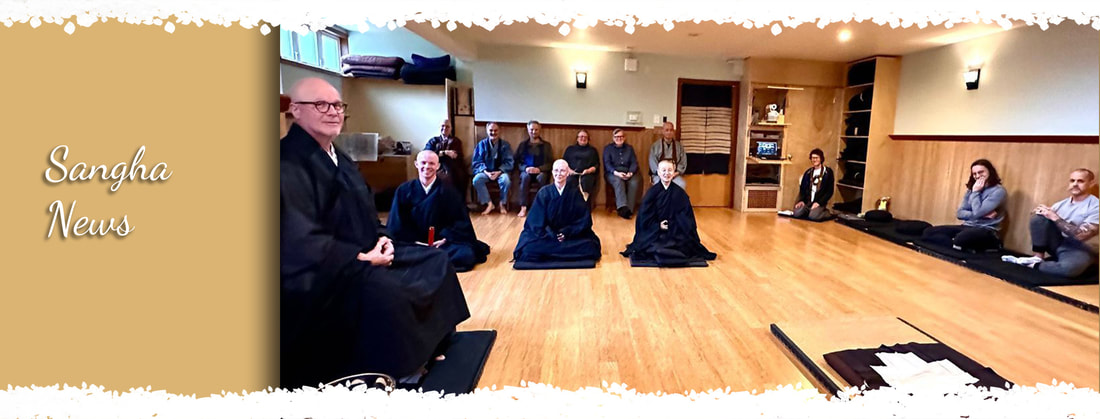
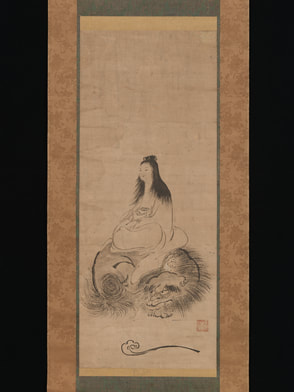


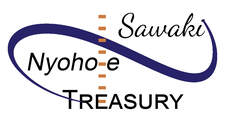
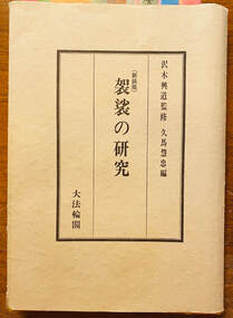

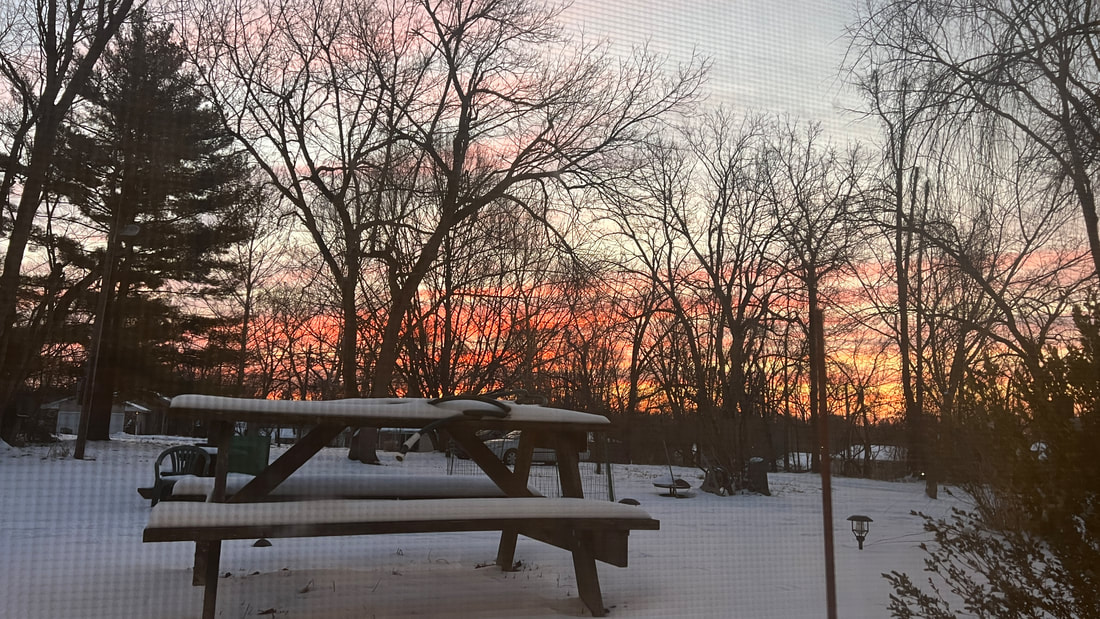
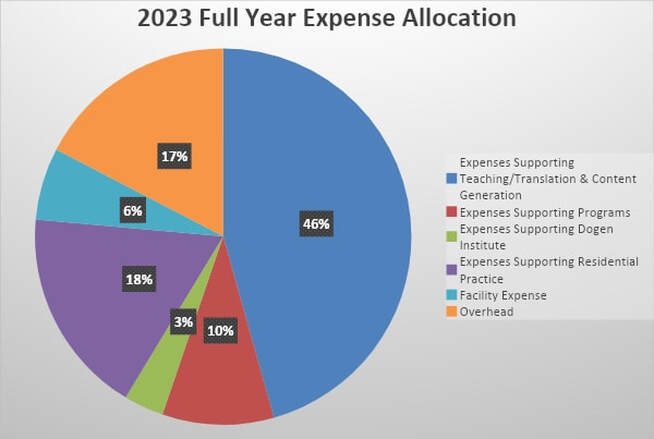
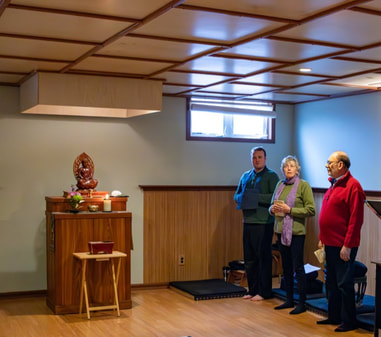
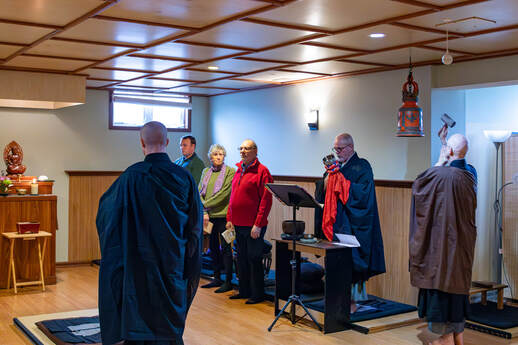
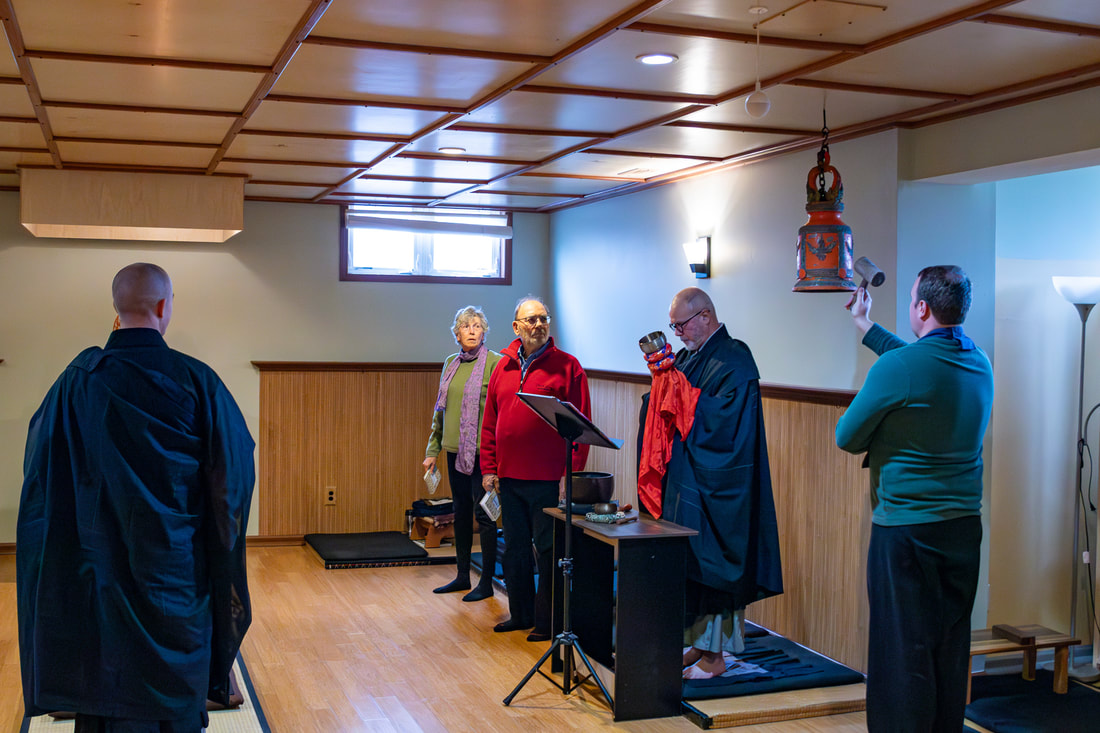

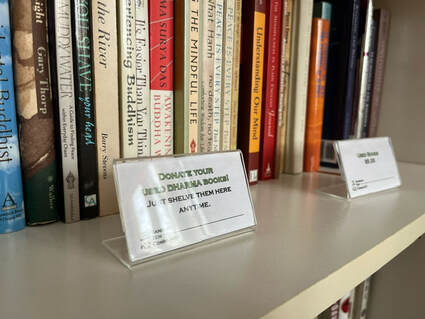
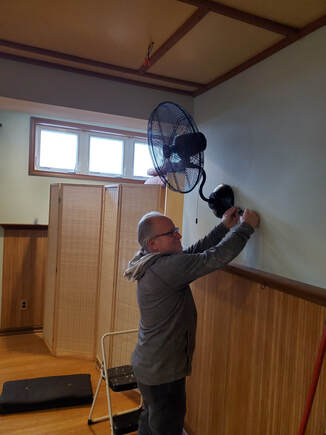
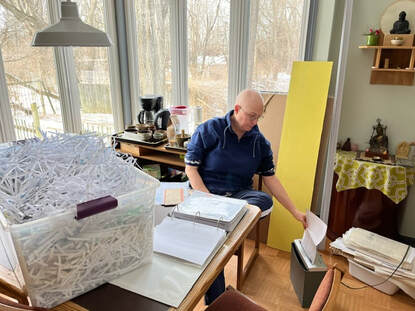

 RSS Feed
RSS Feed